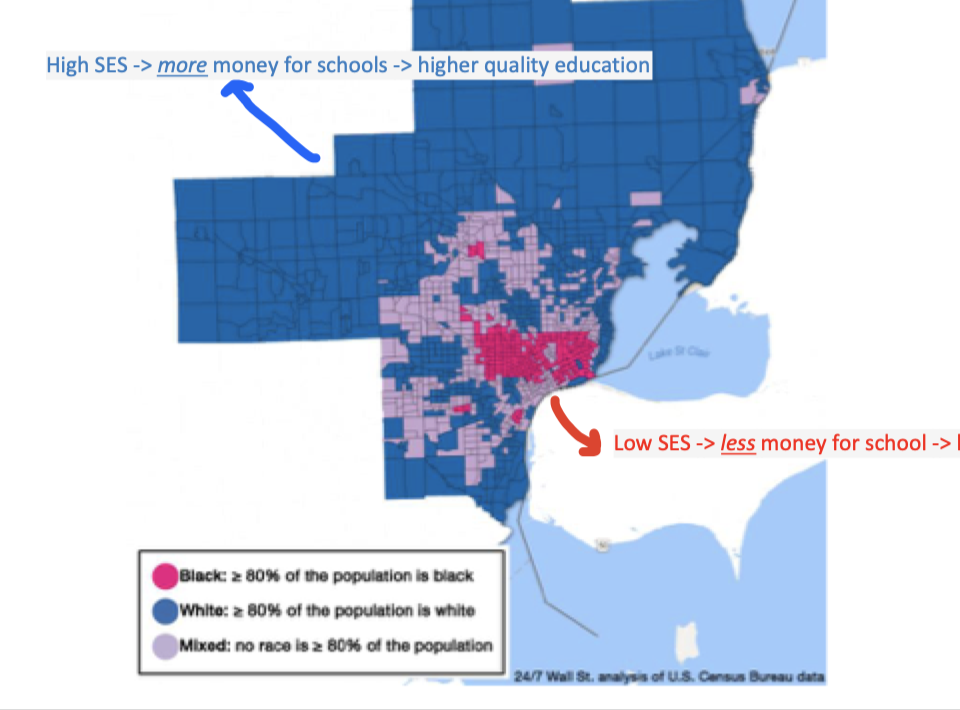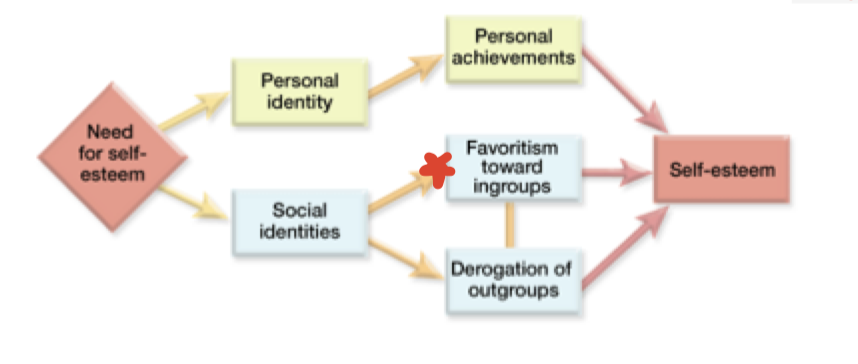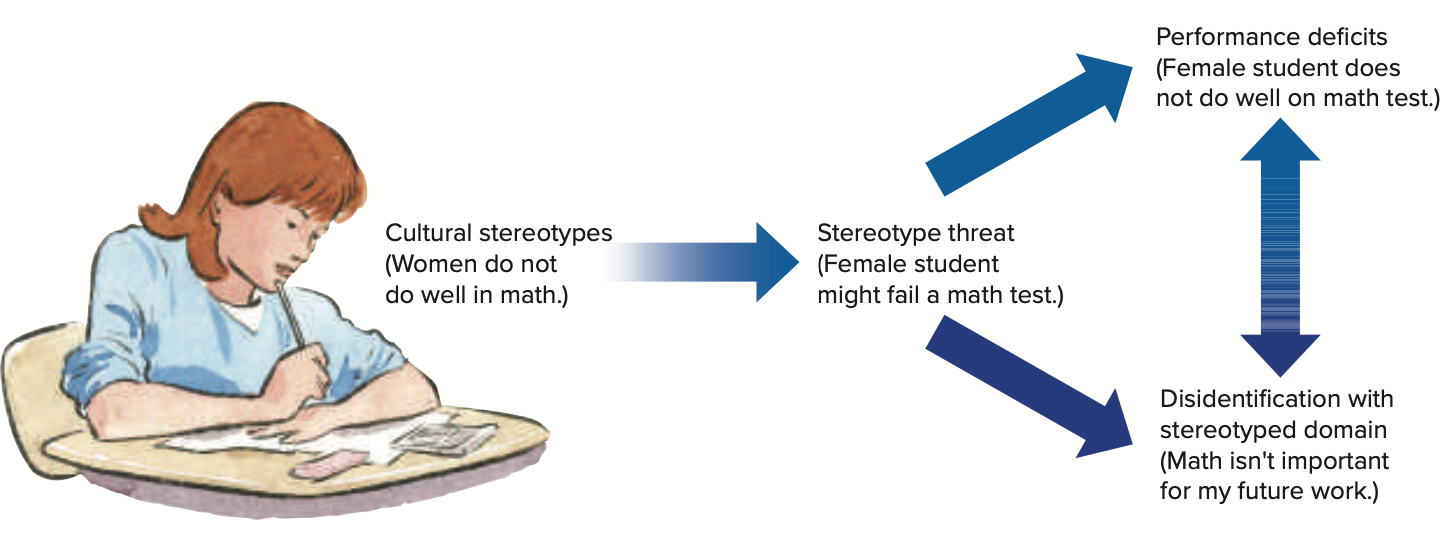Chapter 11: Prejudice
1/43
Earn XP
Description and Tags
+ Lecture content from March 25th & 28th
Name | Mastery | Learn | Test | Matching | Spaced |
|---|
No study sessions yet.
44 Terms
What country has the highest and lowers gender pay gap?
Highest = South Korea → 36.7%
Lowest = Greece → 4.5%
(Canada = 18.2%)
What fraction of men think that they could take a point off Serena Williams “if there were playing there best tennis” ?
1/8 men think they could
(only 3/87 women think they could)
How do the 3 components of attitude relate to prejudice, discrimination, and stereotypes?
Affect → prejudice
Behaviour → discrimination
Cognition → stereotypes
Stereotypes
Believing that certain attributes are characteristic of members of a particular group
Harmful generalizations
Content of stereotype can be positive or not
Can have a “kernel of truth” or not
Where do stereotypes come from?
Culture
Media
Social groups
What we learn at home
“Old-fashioned racism”
Outright, explicit prejudice and discrimination
“Modern racism”
Denial that there is continuing discrimination
Resentment about the demands that disadvantaged groups make for equal treatment
Resentment about concessions made to disadvantaged groups
Modern racism x shoving study
When a white person shoves black person
13% of rates said it was aggressive
*When a black person shoves white person
73% of rated said it was aggressive
RESULTS = raters were more likely to say shoving was aggressive when it was a black person who was doing the shoving
Aversive racism
Individuals will state that they have egalitarian views → they will not be overtly discriminatory
BUT they still feel discomfort around members of racial minorities
Behavioural consequences = avoidance of outgroup members, anxiety and overcorrection, subtle discrimination
Institutional/systemic racism
The differential access to goods, services, and social opportunities based on group status
Hides as other factors (e.g., neighbourhood, income, education) → BUT it spreads and those becomes extremely difficult to rectify (correct)
Detroit-Warren-Dearborn Michigan x institutional/systemic racism
Low SES neighbourhoods = more likely to be populated by Black residents
Less money for schools → lower quality education
High SES neighbourhoods = more likely to be populated by white residents
More money for schools → higher quality education
*Demonstrates systemic barriers to education

Ambivalent sexism → hostile sexist items
“Most women fail to appreciate all that men do for them”
“women seek to gain power by getting control over men”
“Most women interpret innocent remarks or acts as being sexist”
Ambivalent sexism → benevolent sexist items
“Women should be cherished and protected by men”
“Many women have a quality of purity that few men possess”
“A good woman ought to be set on a pedestal by her man”
“Women deserve protection”
Although it sounds positive, it is negative….
Ambivalent sexism
Hostile + benevolent sexism (positive correlation)
Both men and women who score high on benevolent sexism do not necessarily recognize that they hold stereotypes toward women…
How does hostile sexism predict discrimination? (ambivalent sexism)
Sexual harrasemnt
Intimate partner violence
How does hostile benevolent predict discrimination? (ambivalent sexism)
Decreases women confidence & workplace performance
Encourages subordination
What are 3 different perspectives on the causes of stereotypes and prejudice?
Economic perspectives
Realistic conflict theory
Motivation perspectives
Social identity theory
Cognitive perspectives
Cognitive misets
Illusory correlations
Realistic conflict theory (economic perspectives)
Hostility between groups is caused by direct competition for limited resources
E.g., economic, natural, political, and social resources
Robber’s Cave experiment
22 middle class 5th boys were split into 2 groups → “Eagles” vs. “Rattlers”
Task = boys played games in exchange for prizes → this competition for resources created stereotypes, prejudice, and discrimination between groups (CONFLICT)
Inter-group conflict was reduced by adding superordinate goals
Social identity theory (motivational perspectives)
People favour in-groups over outgoups → enhances their own self-esteem
In-group bias = tendency to favour one’s group
Self-esteem bolstered by belonging to favourable group

Minimal groups paradigm (social identity theory; motivational perspective)
Option 1 = $3 to in group, $4 to out-group
Option 2 = $2 to in group, $1 to out-group
RESULTS = participants more likely to choose option 2 → they were willing to lose money in order to make sure that those who diagreed with them (out-group) got less money
In-group/out-group candidate self-esteem study
(1) Participants given positive or negative feedback about their own intelligence → self-esteem assessed
(2) Participants they watched a videotape of a job applicant who was subtly described as being an out-group member (or not) → participants asked to rate candidate & own self-esteem assessed
RESULTS = if participants were given positive feedback → more likely to rate the in-group and out-group members equally
BUT if participants were given negative feedback → more likely to rate out-group members more negatively (***negatively rating out-group members also caused their own self-esteem to increase)
FINDINGS = low self-esteem fuels discrimination
Illusory correlations
When you think there is a relationship between 2 events (but there really isn't )
Why do illusory correlations happen?
Distinctive events capture attention
More likely to be remembered
May become over-represented in memory
Events become distinctive when….
they are infrequent
they are counter-normative (unusual)
Illusory correlations x racism
Distinctive events (minority status + rare behaviour) stand out
Prejudice
Preconceived negative attitudes
Can be subtle (unconscious) AND overt (conscious)
Discrimination
Unjustified negative behaviour
Group-serving bias
Assigning out-group members’ negative behaviour to their natural character
WHILST explaining away their positive behaviours
Stereotype threat
Apprehension when faced with negative stereotypes → worries that others will evaluate them based on this stereotype
Self-confirming apprehension

T pr F: Unequal status breeds prejudice
TRUE
Social dominance orientation
Motivation to have your own group be dominant over other social groups
in-group > out-group
Ethnocentric
Believing your own ethnic and cultural group is superior
*Corresponding disdain for all other groups
Authoritarian personality
Personality that favours obedience to authority
Also intolerance of outgroups & those lower in status
Social identity
The “we” aspect of our self-concept
The part of our answer to “Who am I?” that comes from our group memberships
In-groups
“Us”
Groups of people who share a sense of belonging → a feeling of common identity
Out-groups
“Them”
Groups that people perceive as distinctively different from their in-group.
In-group bias
The tendency to favour your own group
Terror management
The self-protective emotional and cognitive responses that arise when confronted with reminders of death
We shield ourselves from the threat of our own death by derogating those whose further arouse our anxiety
Out-group homogeneity effect
Perception of out-group members as more similar to one another than are in-group members
“They are alike; we are diverse”
The greater our familiarity with a social group = the more we see its diversity
Own-race bias
The tendency for people to more accurately recognize faces of their own race
How self-enhancing social identities support stereotypes

Just-world phenomenon
The belief that the world is just
THUS people get what they deserve & deserve what they get
Subtyping
Putting people who deviate from ones stereotype into a different, special class of people
“Atypical exceptions”
Subgrouping
Putting people who deviate from ones stereotype into a a NEW stereotypical group